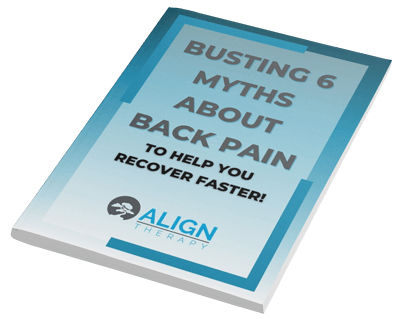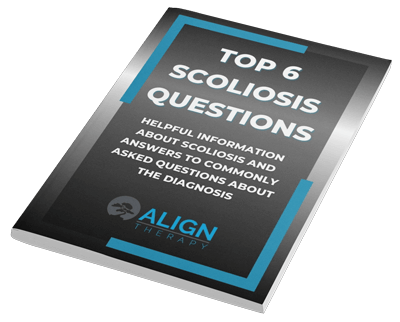
A common question I get asked as a scoliosis specialist is “Is my child’s scoliosis bad enough to need treatment?”. This is a very fair question, and I want to share how I decide IF treatment is needed, along with WHAT scoliosis treatment is best.
In Utah, I have worked closely with many pediatricians who send me all sizes and shapes of scoliosis. While the majority of these need treatment, there are some with mild curves or who are done growing that don’t necessarily need scoliosis treatment.
On the other hand, consistently, we will see patients who were told to “wait and see” if the scoliosis gets worse…and it got worse! Surprise! Well, not much of a surprise if you know what you are looking for most times. I also see this happen when a child with scoliosis is told to discontinue their brace too early.
So, how do we avoid OVER-TREATING or UNDER-TREATING scoliosis?
This is a challenging topic to explain, but hopefully I can shed some light on the process we go through in deciding this.
First, we need to look at what their risk of progression is. Left untreated, what is the risk that this curve is going to get worse? There are 4 things we look at for this:
- Age at Diagnosis
- Growth Potential
- Cobb Angle at Diagnosis
- Family History
Now, there are many other things we think about when looking at risk of progression, but I think breaking down each of these should help in understanding when treatment is needed.
Remember, we are not looking to over-treat these patients. But….on the other hand….we are also not wanting to under-treat them either. We don’t know 100% who will progress and who will stay the same, but we can make a pretty good educated guess.
So, let’s get into each one:
Age At Diagnosis

This is probably the first question I ask someone when they come into my office for scoliosis treatment. How old are they? But…more importantly….how old were they when they were diagnosed with scoliosis?
The younger they are at diagnosis, the higher their risk of progression. This is simply due to them having more time left before they are done growing.
If a girl is diagnosed at age 15, she has a smaller risk of progression because she most likely doesn’t have a ton of growth left. On the other hand, if she is diagnosed at age 9, we need to watch that curve for longer because she won’t be done growing for a while.
Being diagnosed with scoliosis later in the adult years is different. This could be adult onset scoliosis or it could be idiopathic scoliosis that was not caught sooner. That is beyond the scope of this blog post, but in that case, I would definitely want to look deeper into it.
Taking kids to their yearly well checks with their pediatrician is an important step in this process. The pediatrician will screen them for scoliosis and, if they have been going regularly, we can make a more accurate guess about when that curve started. If they haven’t been seen for 5 years by their pediatrician, then it really is hard to tell when the curve started.
The moral of the story….GO TO YOUR PEDIATRIC WELL CHECKS!
Growth Potential
Ok, now we are getting into a little more complexity. Growth potential is trying to figure out how much growth a child has left during their adolescent years. It is not an exact science, but we do our best to figure out how much is left with the following, listed in order of accuracy.
- Sanders Score – This is a measurement of bone age that is obtained through an x-ray of the hand. Sometimes, a children’s hospital will have the child put their hands up to get this x-ray at the same time as the spine x-ray, thus saving radiation exposure.
The Sanders Score is the most accurate measurement currently and is a scale of 1-8, with 8 being full skeletal maturity. If you can get this number, it will definitely help make a more accurate decision. - Risser Score – Traditionally, this score is used to determine skeletal maturity. The reason this is used frequently is because it is usually visible with a regular spine x-ray. The top of the pelvis is assessed for closing of the growth plates. It is a 0-5 point scale with 5 being bone maturity.
The main problem with the Risser score is that it is not as accurate for males, and not always accurate for females. Using Risser is better than nothing, and in the absence of the Sanders Score, it should be used. - Parental Height – A frequently used, but rarely accurate, was of assessing how much growth someone has left is to look at their mother and father’s height. It is true that most girls average out to be as tall as their mothers, and most boys are similar in height to their fathers, but there is a lot of variability.
With that said, I still ask my patients about this and try to use this data when making decisions. It is not usually the sole source of information though.
Once you have an idea of the growth potential of the child, you can make a more educated decision on if they need treatment. Kids that have more growth left, will usually have a higher risk of progression. Treatment looks very different for someone who is almost done growing, and someone who has just started growth spurts.
One thing we are really looking for is to see when their “peak growth velocity” is. When they are growing rapidly, that is where we usually see progression of scoliosis.
If someone has a lot of growth left, treatment is more needed because this increases the risk of progression.
Cobb Angle At Diagnosis
This is a very important number to know when determining the need for treatment. How big is the curve? The Cobb Angle is taken from an x-ray and determines how bad the curve is.
Curves under 10 degrees we don’t really call scoliosis. There is some variability in the spine in those without scoliosis, but once it gets over 10 degrees, there is most likely a structural curve that needs to be addressed.
After 10 degrees, they have a mild curve until they get to 25 degrees. Treatment involves scoliosis specific exercise and monitoring of the curve.
At 25 degrees and up to 45 degrees, we call the curve Moderate. This is where we start to add bracing into treatment and continue the scoliosis specific exercise, like The Schroth Method. We continue to monitor these curves because they have progressed and we want to stop that progression.
After 45 degrees, curves tend to continue progressing even after they reach bone maturity and stop growing. Because of this, surgery is discussed for curves over 45 degrees. The risk of progression of these curves is the highest.
So, the larger the curve…the more risk of progression there is.
Family History
This is something I ask all of my patients, but it does not always apply to each patient. Sometimes I find a strong family history, with mom, grandma, sister, and aunts having scoliosis curves. Did those people have curves that progressed? If so, this could indicate a curve that is going to progress.
I do not make a decision solely based on family history, but it is definitely something that gives us an idea of the genetic predisposition of their scoliosis. Not all curves in children will get to the size of their parents, but it is interesting to see how often it does happen.
Family history of scoliosis and progression is just another data point we can use to determine the risk of progression.
Putting It All Together
So, how do we use these 4 tests/observations to determine if someone needs treatment? We tally up their risk of each section and do our best to determine if they have a high risk of progression.
For example: A 10-year-old female with a 35 degree Cobb Angle with no family history of scoliosis, with a Risser 1. Would you want them to get treatment?
YEEESSSSS!
She has a high risk of progression because of young age at diagnosis, a moderate Cobb Angle, and she has high growth potential because she is a Risser 1. I would definitely treat that patient because most likely, she is going to progress.
Lets look at another one:
A 15-year-old male with a 28 degree Cobb Angle and an uncle who had scoliosis that went to surgery. He is 5’3” and his father is 6’2”. Would you want them to get treatment?
YES!
Even though the age is not very young, the growth potential is definitely there with his father being tall. He is in the moderate range of scoliosis with a 28 degree curve, and would benefit from scoliosis specific exercise, and possibly bracing.
Ok, last one:
A 13-year-old female with a 15 degree scoliosis who is a Risser 4 and no family history of scoliosis. Would you want them to get treatment?
Maybe, but most likely no. This patient is almost done growing and has a mild scoliosis curve. If they wanted to be on the safe side and do some treatment, I would not be opposed to it, but the risk of progression is low. If she has back pain, then definitely, treatment could help reduce that back pain.
Hopefully you are seeing how the decision on whether to treat or not is made. Not everyone with scoliosis needs to be treated. Many of our scoliosis patients don’t have back pain, and if their risk of progression is low, then it would be “over-treating” if we pushed it.
Now, if someone has a higher risk of progression, I am a huge advocate of treatment. In my opinion, it is better to treat and maybe not have needed it, than to not treat and wish you had later. We cannot turn back the clock on these curves.
I see many surgeons tell patients to wait and see if their curve gets worse. This is all fine and good if we are only looking at limiting the need for surgery, but if we want to keep the curve as small as possible, we should use better judgment and look at the potential for progression.
The “Wait and See” approach is outdated, and we should be using better clinical judgment to determine if treatment is necessary.
If you are looking to proactively treat your scoliosis, or your child’s scoliosis, I would love to discuss options with you. Even if you have been told to “wait and see”….or maybe ESPECIALLY if you have been told to “wait and see”, I would love to show you what we can do.
Just go to our scoliosis page at https://aligntherapyutah.com/child-teen-scoliosis/ and submit for more information or a Free Consultation.
Sincerely,
David Butler, Physical Therapist



